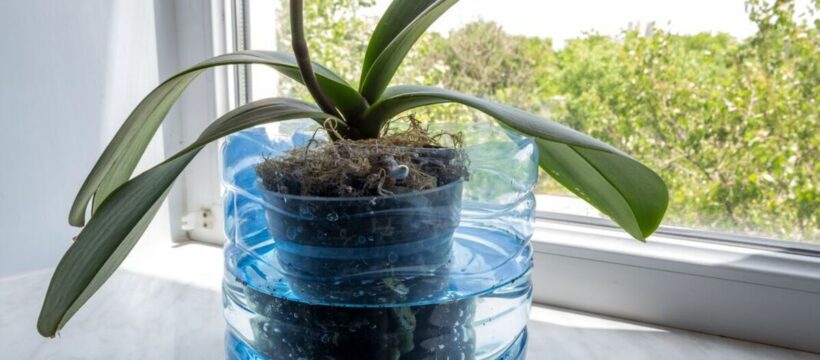Plant rescuer Sarah Gerrard-Jones shares tips caring for orchids
The orchid family has over 880 different types (called genera) and over 22,000 species. These numbers are growing every year making orchids the largest and most diverse of the flowering plant families.
These interesting flowers can be found in a range of colours and sizes depending on the variety and these houseplants make excellent accent plantings for nearly any home decor.
The amount of work involved in maintaining healthy indoor plants can initially seem intimidating for those who are beginners.
However, owners will find that their orchids require little care once all their basic needs are met such as light, temperature, and humidity.
Westerlay Orchids believe everyone can have a green thumb. Their president Toine Overgaag has shared his “10 optimal House plant and orchid growing tips” that are guaranteed to keep orchids as well as other houseplants “alive and thriving”.

He said; “At Westerlay, we know firsthand that the beauty of an orchid can provide people with fulfilment – nurturing it, watching it grow, and then seeing it bloom.
“We repeatedly see that the gift of nature is the gift that keeps giving – and inside plants are proven mood lifters. The best part – keeping them alive is not that hard.”
1. Check the plant before watering
Toine claimed that for orchids and all houseplants, it’s “essential” to check the soil before watering. He said: “If your plant’s soil is dry about an inch down, it’s time to water.
Watering is always the big question regarding orchids – too much water leads to root rot, and not enough leads to dehydration.
However, the expert noted that it’s as simple as checking the roots. Toine said: “If they are green and the bark is dark and moist, watering can wait a few more days. If the roots look grey and the bark is dry, it’s time to water.”
2. Get the lighting right
Every houseplant has different light requirements, for example, orchids like plenty of indirect sunlight, and a fiddle-leaf fig likes lots of direct light.
Don’t miss…
‘Very effective’ tip to get rid of mosquitoes – they ‘cannot stand the aroma’[EXPERT]
Four ‘effective home remedies’ to kill bed bugs and ‘eliminate an infestation’[INSIGHT]
Remove ‘stubborn’ mattress stains in 10 minutes with £1 item – ‘works the best’[TIPS]

Plant owners can check with the nursery or garden centre before leaving, check the tag, or do a quick Google search for the light requirement of the plant. The expert highlighted: “Where you place your plant will be the difference maker.”
3. Soak the plant and then drain
The orchid expert said that “a surefire way to water your orchid” to make sure it “drinks just the amount it wants and needs” is by placing the orchid in a watertight container, pouring water onto the bark, and letting the water fill the container to the halfway mark.
Then let the orchid soak for at least 20 minutes. The orchid can soak for one to two hours if it is very dry. After, remove the orchid from the water and allow it to drain. Pour out the water from the container and return the orchid to the decorative pot.
4. Fertilise to keep them thriving
All houseplants benefit from regular fertilisation to provide essential nutrients, however, orchids have specific nutritional requirements. Toine insisted that they be fertilised during the active growth period, which should be reduced during the resting period.
5. Keep them from browning
Owners need to “stay on top of pruning and regularly trim away dead or yellowing leaves or dead flowers” so the plant’s energy can stay focused on new growth.
6. Get rid of pests
If pests, bugs, or aphids are spotted on plants, they should be removed “immediately”. Toine claimed there are “many natural options”, such as organic insecticidal soaps. He said: “They take the moisture out of plants and orchids.”
We use your sign-up to provide content in ways you’ve consented to and to improve our understanding of you. This may include adverts from us and 3rd parties based on our understanding. You can unsubscribe at any time. More info

7. Give them fresh air
Fresh circulating air (ideally between 15C and 24C) helps to prevent fungal disease in houseplants, just “avoid placing them directly below vents”.
8. Be patient
Orchids will go through a dormant phase after one to three months of blooming. At this point give it attention and time while it rests for the next blooming cycle.
Toine claimed: “The cycle of reflowering is why Westerlay’s Single Large Orchid, with its long life span and blooming cycle, is a particularly cherished ‘gift that keeps giving’ and a meaningful reminder of the bond between the gift giver and receiver.”
9. Keep it fresh
When a plant’s potting becomes waterlogged, breaks, or the plant is outgrowing its home, it’s time to repot. New potting soil with nutrients “will encourage further growth”.
10. Give the plant attention
The orchid expert claimed that everyone can have a green thumb by “paying attention” to their plant’s appearance and “making necessary changes”.
Source: Read Full Article
